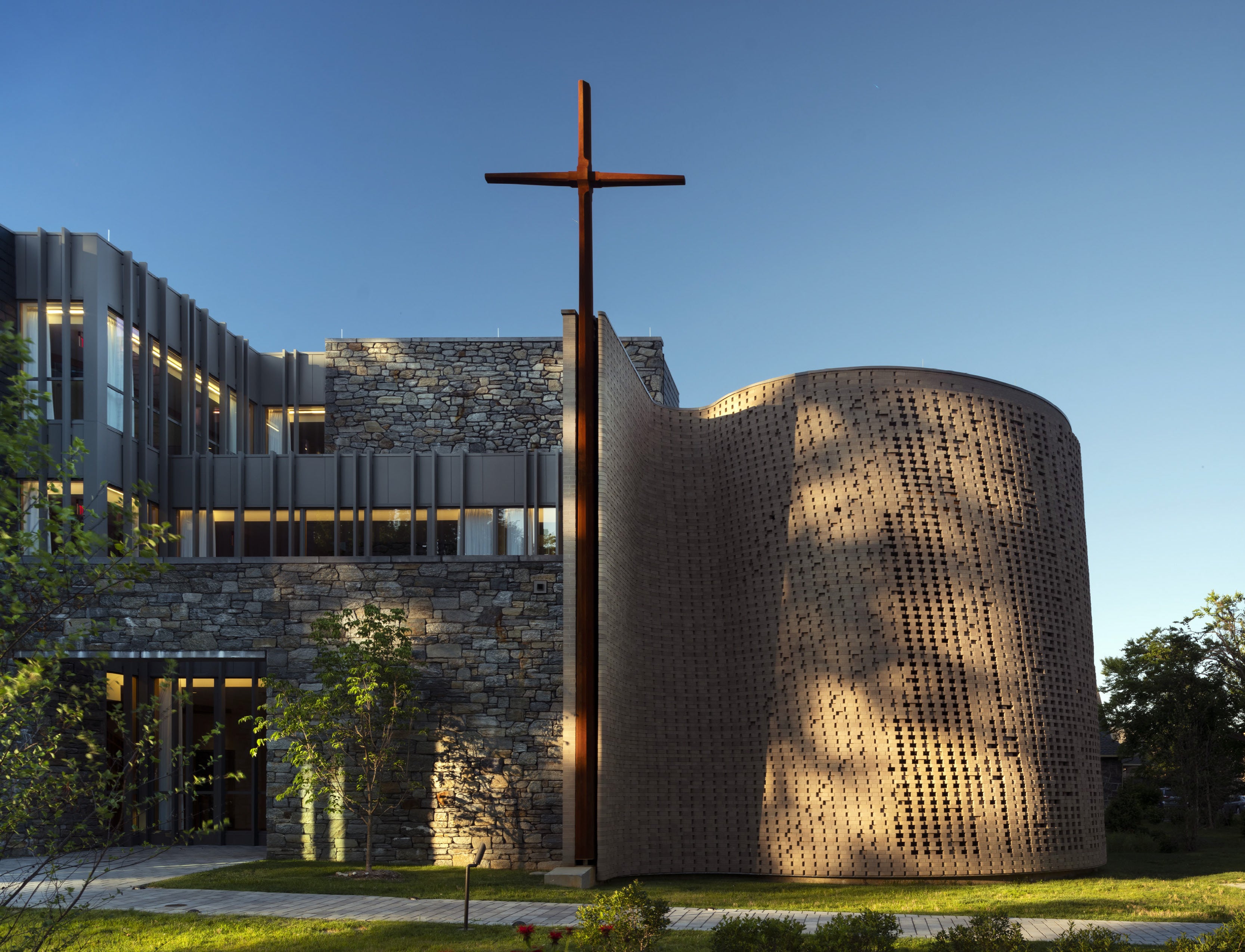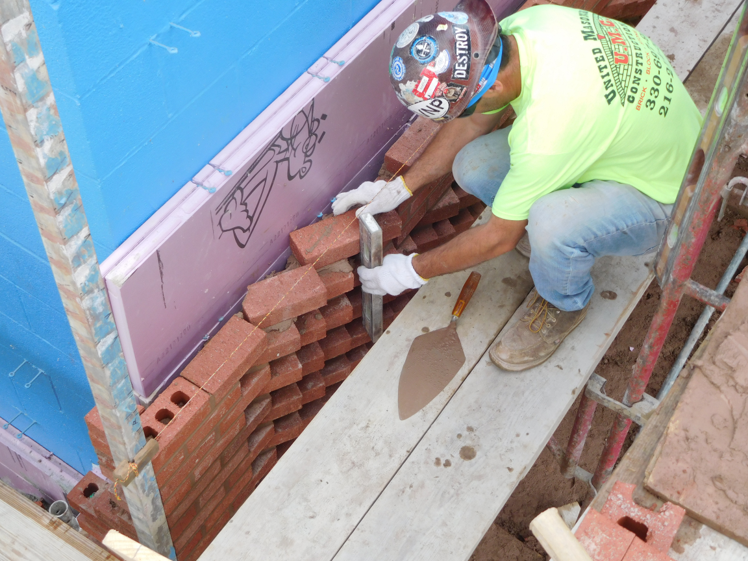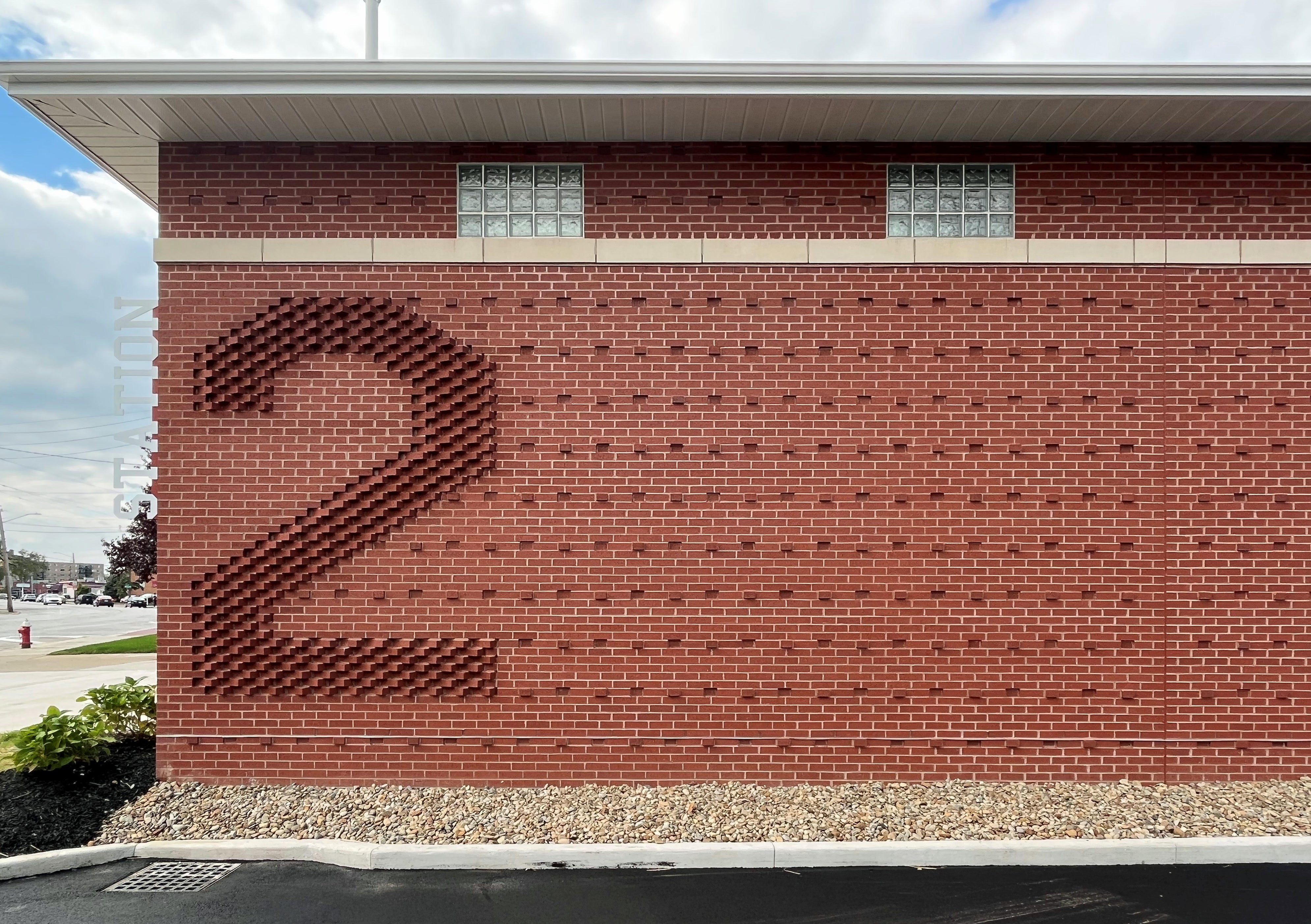2022 JBC Masonry Innovation Award Winners Celebrate BAC-Built Projects and Exciting Possibilities for the Masonry Industry
The winners of the 2022 JBC Masonry Innovation Award prove that leading architects turn to BAC signatory contractors and craftworkers to bring their forward-thinking designs to life.
The competition challenges designers to incorporate BAC materials into their projects in innovative ways, helping to keep masonry relevant now and into the future by aligning with the latest architectural trends. This work will continue the trowel trades in the generations to come.
Philadelphia Design Firm Looks to Masons for Construction Expertise

The skill of BAC installers shines at St. Joseph’s Arrupe Hall, a residential ministry for Jesuit priests in Philadelphia. The project earned Moto DesignShop this year’s JBC Award in the A/E firm category.
At the heart of the Arrupe Hall is a curvilinear brick chapel. Its design pays homage to the Jesuit Christopher Clavius’ role in developing the Gregorian calendar in the 16th century, which today is the most widely used calendar in the world.
The chapel is made up of 123 courses of bull nose and header brick. Together, they create an undulating screen that filters light and views inside the sanctuary. The screen steps back at each course by approximately 1/4 inch.

designed by Moto DesignShop.
To bring the intricate design to life, each course of custom brick was laid out digitally in AutoCAD. A complete 3D Rhino model provided a visualization of the installation. Every brick in the screen was documented and labeled by its type and location. The masons on the project, members of BAC Local 1 Pennsylvania/Delaware, with signatory contractor Lepore, were given a coursing plan for each layer. The crew used Hilti laser positioning to lay each course according to the plans, which they referenced both digitally and in print.
The perforated structure gives masonry an unexpectedly airy look, while a thoughtful structural system provides rigidity. The brick walls were reinforced using vertical rods through the courses. This allowed the brick to act as a continuous membrane, so that it could be tied to horizontal and vertical structural members behind it. That system, in turn, was tied back into the building structure, creating a rigid hidden skeleton with only the brick membrane visible.
Young Ohioan Architect’s Designs Show Deep Appreciation for Masonry
In Ohio, Eric Pros, Director of Design at DS Architecture, collaborated with IMI and BAC craftworkers to figure out how to make his designs a reality. The son of a BAC Local 5 Ohio BAC member, he knew from experience that the union would have the answers.

Lakewood Fire Station Number 2.
Pros was honored with the 2022 JBC Award in the Young Architect category for a body of work he submitted that celebrates creative, and cost-effective, uses of masonry.
One such project is Lakewood Fire Station Number 2, which includes a brick feature wall installed by BAC Ohio-Kentucky Administrative District Council (OH-KY ADC) members with signatory contractor United Masonry. Eric worked with IMI to develop the details for the project using BIM for Masonry tools, and BAC apprentices built a mock-up of the wall in their training center. Rather than using special shaped units, the brick is rotated 30 degrees, forming a number “2” that’s meant to pay tribute to the proud legacy of the city’s heroic firefighters.

was installed by BAC OH-KY ADC members.
In another creative use of masonry, the Westlake Senior Community Center draws inspiration from ancient Roman architecture like the Pantheon. The design, constructed by OH-KY ADC members with signatory contractor Coates Construction, reimagines a standard running bond pattern with a unique quarter coffer that runs a full wythe. After testing designs at BAC’s training center, and with the help of IMI, the team created a jig as a template to make the system repeatable and easy to construct on site.
It takes innovation to revitalize landmarks on the National Register of Historic Places like the LN Gross Company Building. Eric’s team at DS architecture transformed the art deco garment factory into new office spaces fit for collaboration. Together with BAC signatory contractor Ameriseal & Restoration, the project team reused over 90% of the building’s original brick, despite decades of neglected mortar joints, and failing walls. On the building’s addition, the brick was tumbled and manually marred to blend with the historic units. The building is a shining example of masonry’s sustainability in adaptive reuse projects.
Students in Canada Experiment with 3D Printed Water Management System
The JBC Award also honors the next generation of architects and engineers with a student award. This year, a team of graduate architecture students at the University of Waterloo were recognized for their project Shedding Water, a 3D printed terra cotta rainscreen system.
The concept reimagines a typical roof-to-wall architectural detail, integrating water management into a continuous clay cladding rainscreen system on a supporting substructure. Each unit in the system has a unique shape, making 3D printing essential to the manufacturing process. Shedding Water represents a broader culture of experimentation with masonry materials that push the boundaries of how we design and build.
These award-winning projects are a testament to the innovation that takes place when designers and builders collaborate to create high-performing, beautiful buildings.
